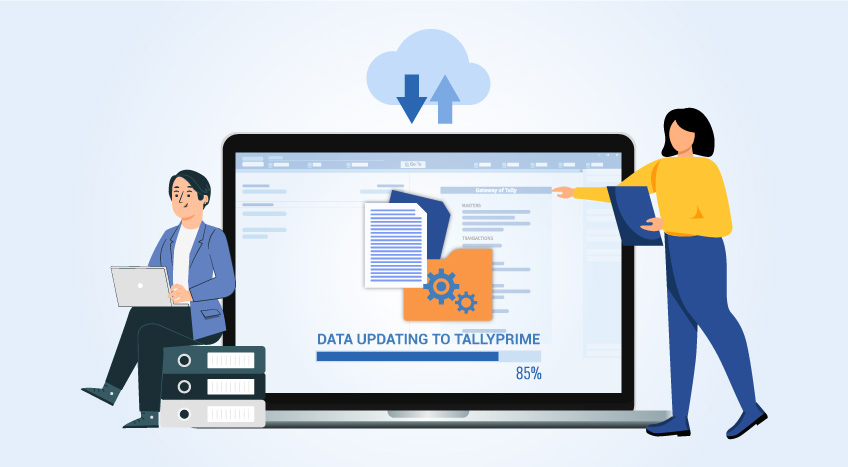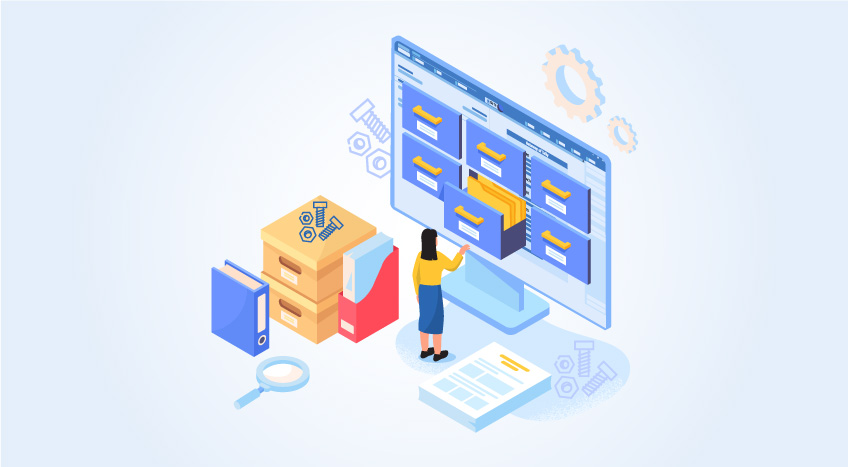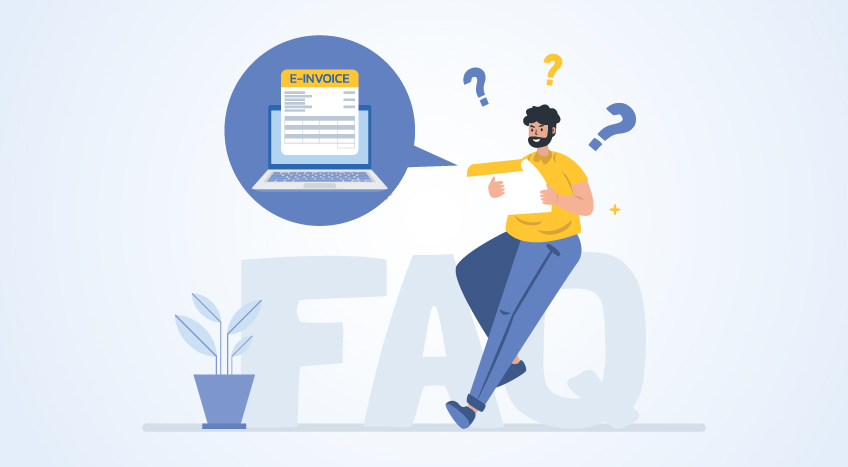Gauri Sachan |Updated on: January 4, 2024
- Introduction to e-Invoicing
- Implementation & Applicability
- Technical Aspects
- Registration Process
- Cancellation & Modifications
- Specific Scenarios
- E-Way Bill & Related Queries
- Business Benefits
In the recent update, starting from 1st August 2023, e-invoicing has become essential for all the registered persons whose aggregate turnover (based on PAN) in any prior fiscal year from 2017-18 onwards exceeds 5 crores.
Here is a compilation of some frequently asked questions regarding e-invoicing under GST.
Introduction to e-Invoicing
-
What is e-invoicing under GST?
The term "Electronic invoicing," or "e-Invoice," refers to a system where all business-to-business invoices are electronically uploaded and verified by the assigned portal. The Invoice Registration Portal verifies the e-invoice and generates an IRN and a QR code which the seller needs to attach to the invoice before printing it or sending it to
Implementation & Applicability
-
When will e-invoicing get implemented?
The first, e-invoice was applicable from 1st October 2020 for businesses with a turnover of 500 crores. From, 1st January,2021 e-invoicing is applicable for businesses with an annual turnover of 100 crores, followed by 50 crores. Currently, it is applicable for businesses with turnover above 10 crores.
In the recent update, as of 1st August 2023, e-invoicing will be mandatory for all the registered business whose aggregate turnover (based on PAN) in any prior fiscal year from 2017-18 onwards exceeds the 5 crores.
-
Who are eligible for e-invoicing?
Electronic invoicing applies to all the businesses that are registered under GST and issue B2B invoices in a phased manner as notified by the Government. Currently, applicable for all business whose aggregate turnover exceeds the 5 crores.
-
Is e-invoicing mandatory?
Yes, it is mandatory for all businesses that fall under the ambit of e-invoicing and need to issue an e-invoice for all B2B supplies.
-
Why is e-invoice required?
To standardize the format in which electronic data of an invoice can be shared with various systems in GST ecosystem ensuring the interoperability of the data. Once the invoice is uploaded and verified by the IRP, it is shared with the GST system for return filing and with e-way bill system for generating e-way bills.
Technical Aspects (Fundamentals of e-invoicing)
-
What is the IRP in e-Invoice?
IRP is a designated portal designed to accept, validate, and authenticate the invoice.
-
What is an IRN (Invoice Reference Number)?
IRN known as “Invoice Reference Number” is a unique invoice number generated by the Invoice Register Portal (IRP) on uploading the invoices electronically.
-
Can IRN be generated in bulk?
Yes, you can upload the bulk invoices and generate IRN for each invoice that is uploaded. TallyPrime seamlessly supports IRN generation for bulk invoices.
-
What are the types of documents reported under IRP?
The following documents are covered under the concept of e-invoice:- Invoice by Supplier
- Credit Note by Supplier
- Debit Note by Supplier
- Any other document as required by law to be reported by the creator of the document
Registration Process (e-invoice process)
-
Where to register for e-invoicing?
All GST-registered taxpayers who are required to generate IRNs should register for e-invoicing using their GSTIN on the Invoice Registration Portal.
Additionally, taxpayers who are registered on the e-way bill portal are not required to register on the e-invoice system; instead, they can use their EWB credentials to login.
-
How to generate e-invoice in the GST portal?
In case you are a first-time user, then you need to go through the following steps:
-
-
- Visit the e-invoice portal
- Click on the Registration button
- Click on e-Invoice Enablement
- Enter the GSTIN of the company
- Post this; you'd need to get the OTP verification done
- Enter the annual turnover details with the related financial year and submit
- Now you are registered for e-invoicing
- You can log in to the e-invoice portal and upload B2B invoices using a chosen mode to generate IRN
-
-
How to upload e-invoice in the GST portal?
Here's how you can upload e-invoice in the GST portal:- Creation of e-invoice in JSON
- Uploading JSON on IRP
- Verification of e-invoice by IRP
- Generation of IRN and QR code
- Sending the IRN and QR to the seller
- Printing the e-invoice with IRN and QR code attached
Cancellation & Modifications
-
Can an e-invoice be canceled partially/fully?
You cannot cancel an e-invoice partially. If you must cancel the e-invoice, then it must be done completely or fully.
When you do this, you must report it to the IRN within 24 hours of the cancellation. If you try to cancel an e-invoice after that period, then you cannot use the IRN. Instead, you need to use the GST portal for cancellation, and it must be done manually. This has to be done prior to filing the returns. When you cancel, you cannot re-use the invoice number, and a new one must be generated else the IRP will reject it.
| How to cancel e-invoice in GST? |
-
How e-invoice works?
e-Invoicing works in two parts - first is the interaction between the business and IRP, and the second is the interaction between the IRP, the GST/E-Way Bill Systems, and the Buyer.
The seller generates e-invoice and uploads it on the IRP. Once the IRP has verified the e-invoice, and IRN and QR code gets generated it is sent back to the seller and also gets updated in the e-way bill and GST system. The sellers sends the invoice attached with the IRN and QR code to the buyer.
-
How to modify e-invoice in GST portal?
You cannot make any modification on the IRP. However, you can make required changes for the invoice details reported on the IRP through the GST portal when filing GSTR-1. As the IRP systems are interconnected with the GST system, as soon as the e-invoice is generated, the invoice details will be auto-populated in GSTR-1, which can be modified.
Specific Scenarios
-
Can we generate an e-invoice for an unregistered person?
As of now, e-invoicing as a concept covers only B2B invoices. So any invoice addressed to unregistered person will not fall under the scope of e-invoicining.
-
Who should register for e-invoicing?
e-Invoicing has been made mandatory for businesses with an annual turnover exceeding Rs 5 crore from 1st August 2023, making it compulsory for all businesses with an annual turnover of 5 crore or more in any preceding financial year from 2017-2018 onwards.
E-Way Bill & Related Queries
-
Is e-way bill required for e-invoice?
No. The e-way bill is not mandatory to be generated with e-invoice. E-Way bill is required if the consignment value is more than 50,000 or if your business falls under the ambit of e-invoicing you will have to generate both.
-
Can we generate e-way bill with e-invoice?
Yes. You can generate e-way bill, while generating e-invoice. However, you also have the option to generate it later.
Business Benefits
-
How does e-invoicing benefit businesses?
Thanks to the complete interoperability of e-invoice data with the GST system, businesses can enjoy a range of benefits. For instance, the system pre-populates invoice details in GSTR-1returns and e-way bills, which helps to reduce reconciliation challenges. Additionally, it provides real-time visibility of invoices, allowing businesses to confirm their eligibility for Input Tax Credit (ITC) and eliminate the possibility of fake invoices.
-
How will e-invoicing curb tax evasion?
Many benefits of e-invoicing exist and one of them is its ability to curb tax evasion.
With an e-invoice, the chances of editing invoices will be low because before any transaction is done, the invoice gets generated. Another reason why e-invoice system is helpful is that it ensures the authorities have information about all the transactions in real-time. e-Invoicing greatly minimizes fake GST invoices and ensures that input tax credit is claimed on real GST invoices due to automation and thorough checks. If someone tries to claim a fake tax credit, then it is easy for GSTN to track them.
Know more about e-invoices in GST
Latest Blogs

How to Easily Shift/Migrate Your Data to TallyPrime

Nuts & Bolts of Tally Filesystem: RangeTree

A Comprehensive Guide to UDYAM Payment Rules

UDYAM MSME Registration: Financial Boon for Small Businesses

Understanding UDYAM Registration: A Comprehensive Guide

MSME Payment Rule Changes from 1st April 2024: A Quick Guide


